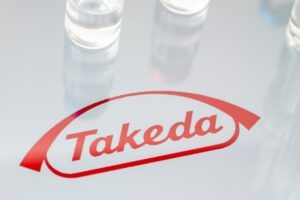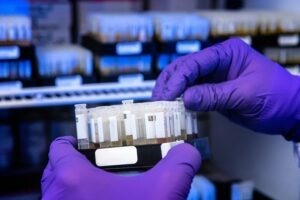The UK National Institute for Health and Care Excellence (NICE) has recommended the routine use of Novartis' tisagenlecleucel (Kymriah), a chimeric antigen receptor T-cell (CAR-T) therapy, for children and young adults aged up to 25 years with B-cell acute lymphoblastic leukaemia (ALL).

Tisagenlecleucel will be made available for routine use on the NHS for treating B-cell acute lymphoblastic leukaemia. Credit: Colin Behrens from Pixabay.
Subscribe to our email newsletter
The recommendation, detailed in the final draft guidance, specifically targets patients whose B-cell ALL has been resistant to treatment, has recurred post stem-cell transplant, or has relapsed for the second time or more.
Approximately 40 children and young adults in England are expected to be eligible for this treatment annually.
Tisagenlecleucel has been accessible through the NHS Cancer Drugs Fund since December 2018, and the new guidance advocates for its standardised distribution across the NHS.
The therapy, listed at £282,000 per infusion, will be offered to the NHS at a discounted rate.
Data collected from the NHS usage and additional clinical trial evidence have shown that tisagenlecleucel extends survival and lowers the chances of disease recurrence or progression, significantly improving patient outcomes versus standard treatment.
The 24-month overall survival rate for patients treated with the therapy was 72%.
Clinical trials revealed a median overall survival of 48 months with tisagenlecleucel, in stark contrast to 7.5 months for blinatumomab and three months for salvage chemotherapy, which are among the other standard treatments.
The confirmation of CAR-T therapy’s effectiveness led NICE’s independent committee to recommend that the treatment be routinely provided within the NHS, allowing for its removal from the Cancer Drugs Fund.
NICE medicines evaluation director Helen Knight said: “I am delighted that we have been able to recommend continued use of this innovative treatment, which is already making a huge difference to the lives of children and young adults.
“The evidence from its use in the CDF and clinical trials shows it can offer an effective treatment, helping people live longer and with a better quality of life and could represent a potential cure for some people.”
 Advertise With UsAdvertise on our extensive network of industry websites and newsletters.
Advertise With UsAdvertise on our extensive network of industry websites and newsletters.
 Get the PBR newsletterSign up to our free email to get all the latest PBR
news.
Get the PBR newsletterSign up to our free email to get all the latest PBR
news.

